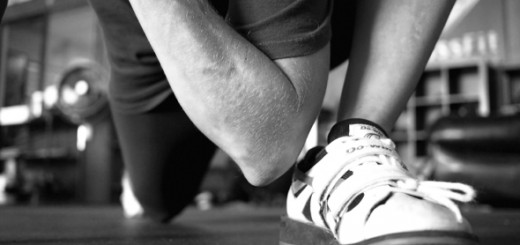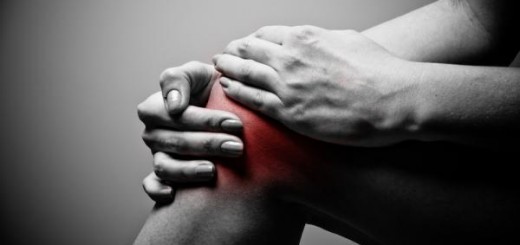In July I posted a blog discussing The Overuse of Cryotherapy. The controversy surrounding the topic made it one of the most popular blogs I’ve written. What is surprising to me is that a controversy exists at all. Why, where, and when did this notion of anti-inflammation start? Ice, compression, elevation and NSAIDs are so commonplace that suggesting otherwise is laughable to most. Enter an Athletic Training Room or Physical Therapy Clinic nearly all clients are receiving some type of anti-inflammatory treatment (ice, compression, massage, NSAIDs, biophysical modalities, etc). I evaluated a client the other day and asked what are you doing currently – “Well, I am taking anti-inflammatories and icing.” Why do you want to get rid of inflammation and swelling? I ask this question for both chronic and acute injury!
The Stigma of Inflammation:
Editor in Chief of The Physician and Sports Medicine Journal (Dr. Nick DiNubile) once posed this question: “Seriously, do you honestly believe that your body’s natural inflammatory response is a mistake?” Much like a fever increases body temperature to kill off foreign invaders; inflammation is the first physiological process to the repair and remodeling of tissue. Inflammation, repair, and remodel. You cannot have tissue repair or remodeling without inflammation. In a healthy healing process, a proliferative phase consisting of a mixture of inflammatory cells and fibroblasts naturally follows the inflammatory phase (1). Researchers headed by Lan Zhou, MD, PhD, at the Cleveland Clinic, found that in response to acute muscle injury, inflammatory cells within the damaged muscle conduct phagocytosis, contribute to accumulation of intramuscular macrophages, and produce a high-level of Insulin-like growth factor 1, (IGF-1) which is required for muscle regeneration (3). IGF-1 is a primary mediator of the effects of growth hormone and a stimulator of cell growth and proliferation, and a potent inhibitor of programmed cell death. Similarly, in 2010, Cottrell and O’Conner stated “overwhelmingly, NSAIDs inhibit or delay fracture healing” (2). And you want to stop this critical process of healing by applying ice, because inflammation is “bad”?
The Anecdotal Rationale for Ice:
Somewhere along the line the concept that ice facilitates healing became conventional wisdom. Sorry, that wisdom is wrong. I had someone tell me the other day, “We need to ice, because we need to get the swelling out.” Really? Does ice facilitate movement of fluid out of the injured area? No, it does not. The lymphatic system removes swelling. The Textbook of Medical Physiology says it best: “The lymphatic system is a ‘scavenger’ system that removes excess fluid, protein molecules, debris, and other matter from the tissue spaces. When fluid enters the terminal lymphatic capillaries, any motion in the tissues that intermittently compresses the lymphatic capillaries propels the lymph forward through the lymphatic system, eventually emptying the lymph back into the circulation.” Lymphatic drainage is facilitated by contraction of surrounding muscle and changes in compressive forces that push the fluid back to the cardiovascular system. This is why ankle pumps work so well at removing swelling.
Inflammation is a necessary component in the first phase of phase of the healing process. Swelling is controlled by the body’s internal systems to attain homeostasis. If swelling is accumulated it is not because there is excessive swelling, rather it is because lymphatic drainage is slowed. The thought that ice application increases lymphatic flow to remove debris makes no sense. Gary Reinl, author of “Iced! The Illusionary Treatment option gave me a good analogy. Take two tubes of toothpaste, one is under ice for 20 minutes, the other is warmed to 99 degrees. In which tube will the toothpaste flow fastest? It does not take an advanced physics degree to know that answer.
What might surprise you is that ice actually reverses lymphatic drainage and pushes fluid back to interstitial space. A study published in 1986 (yes, 1986, is old, but this is a foundational study) found when ice is applied to a body part for a prolonged period of time; lymphatic vessels begin to dramatically increase permeability. As lymphatic permeability increases fluid will pour from the lymphatics into the injured area, increasing the amount of local swelling (5). Ice can increase swelling and retard debris removal!
The Acronym RICE is Bogus:
The acronym RICE is bogus in my opinion. First, Rest is not the answer. Rest does not stimulate tissue repair. In fact rest causes tissue to waste and can cause abnormal gene transcription of collagen tissue. Evidence has shown that tissue loading through exercise or other mechanical means stimulates gene transcription, proteogenesis, and formation of type I collagen fibers (See studies by Karim Khan, Durieux, Mick Joseph, and Craig Denegar). Our body has all types of cells. When a cell is born it has no clue what type of cell it will eventually become. This infancy cell – for lack of a better term – is called a progenitor cell. Progenitor cells can be changed to a specific cell type. Load in tendon tells our body to turn a progenitor cell in to a tenocyte. Load in bone tells a progenitor cell to become an osteocyte. Ever wonder why myositis ossificans (calcification or bone growth in muscle) develops? The direct, repeated trauma turns progenitor cell currently living within muscle to an osteocyte. Subsequently, we develop bone growth within muscle.
The other reason RICE is bogus is obvious; Ice. Ice does nothing to facilitate collagen formation. Ice will not influence progenitor cell development. Ice does not regenerate tissue. Ice does not facilitate healing – it inhibits natural healing process from occurring. Ice does not remove swelling; it increases swelling and lymphatic backflow.
Closing thoughts:
Bottom line, ice and NSAIDs are over utilized. I am not saying never, but I am saying ice is not a magical cure all that fixes everything and is required for healing. It is not the gold standard that it has come to be. My goal with this blog is to get individuals to stop and think before immediately turning to ice and NSAIDs. Is it really the best option? Is it necessary for this injury at this stage? I understand it is not the only form of treatment clinicians use, but ice certainly is the most heavily used. Go ahead, I will wait while you look at your treatment logs.
My goal is to get this trend reversed one clinician and one patient at a time. Have you seen the video discussion between Kelly Starrett, DPT and Gary Reinl? If not I recommend you watch it. It’s fascinating. I am glad to have expert minds like Kelly and Gary in this fight with me.
I ask health care professionals to do one thing, just try it. Pick one client with chronic musculoskeletal pain, skip the ice, skip the NSAIDs and try to use light exercise as a repair stimulus. Then, try skipping the ice on a client with an acute mild injury. The outcomes might surprise you. Great Thought Provoking Reads
- NATA 2013 Meeting. **If you have access – read these**
- Selkow, NM, Pritchard, K. CRYOTHERAPY FOR THE 21ST CENTURY: UPDATED RECOMMENDATIONS, TECHNIQUES, AND OUTCOMES. NATA 2013 Annual Meeting.
- Dolan. New Concepts in the Management of Acute Musculoskeletal Injury. NATA 2013 Annual Meeting.
- Johnson, M, Denegar, C. Mechanobiology, Cell Differentiation and Tendinopathy – From Bench to Bedside. NATA 2013 Annual Meeting.
- Articles and Peer-Reviewed Literature
- William JR, Srikantaiah S, Mani R. Cryotherapy for acute non-specific neck pain (Protocol). Cochrane Database of Systematic Reviews 2013, Issue 8.
- Block, JE. Cold and Compression in the Management of Musculoskeletal Injuries and Orthopedic Operative Procedures: A Narrative Review. Open Access Journal of Sports Medicine 2010:1 105–113
- Hubbard, TJ, Aronson, SL, Denegar, CR. Does Cryotherapy Hasten Return to Participation? A Systematic Literature Review. J Athl Train. 2004 Jan-Mar; 39(1): 88–94.
- Bleakley, CM and Davidson, GW. Cryotherapy and inflammation: evidence beyond the cardinal signs. Physical Therapy Reviews. Volume 15, Number 6, December 2010 , pp. 430-435(6).
- Bleakley CM, Glasgow P, Webb MJ. Cooling an acute muscle injury: can basic scientific theory translate into the clinical setting? Br J Sports Med. 2012 Mar;46(4):296-8.
- Hart JM, Kuenze CM, Pietrosimone BG, Ingersoll CD. Quadriceps function in anterior cruciate ligament-deficient knees exercising with transcutaneous electrical nerve stimulation and cryotherapy: a randomized controlled study. Clin Rehabil. 2012 Nov;26(11):974-81.
- Hubbard, TJ, Denegar, CR. Does Cryotherapy Improve Outcomes with Soft Tissue Injury? J Athl Train. 2004 Jan-Mar; 39(1): 88–94.
- Bleakley C, McDonough S, MacAuley D. The use of ice in the treatment of acute soft-tissue injury: a systematic review of randomized controlled trials. Am J Sport Med. 2004; 32:251–261.
- Takagi, R, et al. Influence of Icing on Muscle Regeneration After Crush Injury to Skeletal Muscles in Rats. J of App Phys. February 1, 2011 vol. 110 no. 2 382-388
**Update**: I’ve had an enormous amount of feedback for this post. I greatly appreciate all of it – good and bad. I am adding this note in regards to an overwhelming amount of questions / comments about acute injury. My response is yes, in many cases I would skip the ice for acute injuries as well!! What is the benefit to delaying the healing process? Some will say, “to prevent hypoxic death” or “to reduce pain”. There are other ways we can stop hypoxic tissue death that do not stop healing. I agree ice has pain modulating effects. But to this I ask, at what cost are we reducing the pain? Is a temporary (30 minutes) pain reduction more important than healing? References
- Buckwalter, JA, and Grodzinsky, AJ. Loading of Healing one, Fibrous Tissue, and Muscle: Implications for Orthopedic Practice. Journal of American Academy of Orthopedic Surgeons, Vol 7, No 5, 1999.
- Cottrell, and O’Connor, P. Effect of Non-Steroidal Anti-Inflammatory Drugs on Bone Healing. Pharmaceuticals, Vol 3, No 5, 2010.
- Haiyan Lu, Danping Huang, Noah Saederup, Israel F. Charo, Richard M. Ransohoff and Lan Zhou. Macrophages recruited via CCR2 produce insulin-like growth factor-1 to repair acute skeletal muscle injury. The FASEB Journal. Vol. 25 no. 1 January 2011. 358-369.
- Guyton, AC and Hall, JE. Textbook of Medical Physiology 10th Ed., W. B. Saunders Company. 2000.
- Meeusen, R. The use of Cryotherapy in Sports Injuries. Sports Medicine. Vol. 3. pp. 398-414, 1986.






